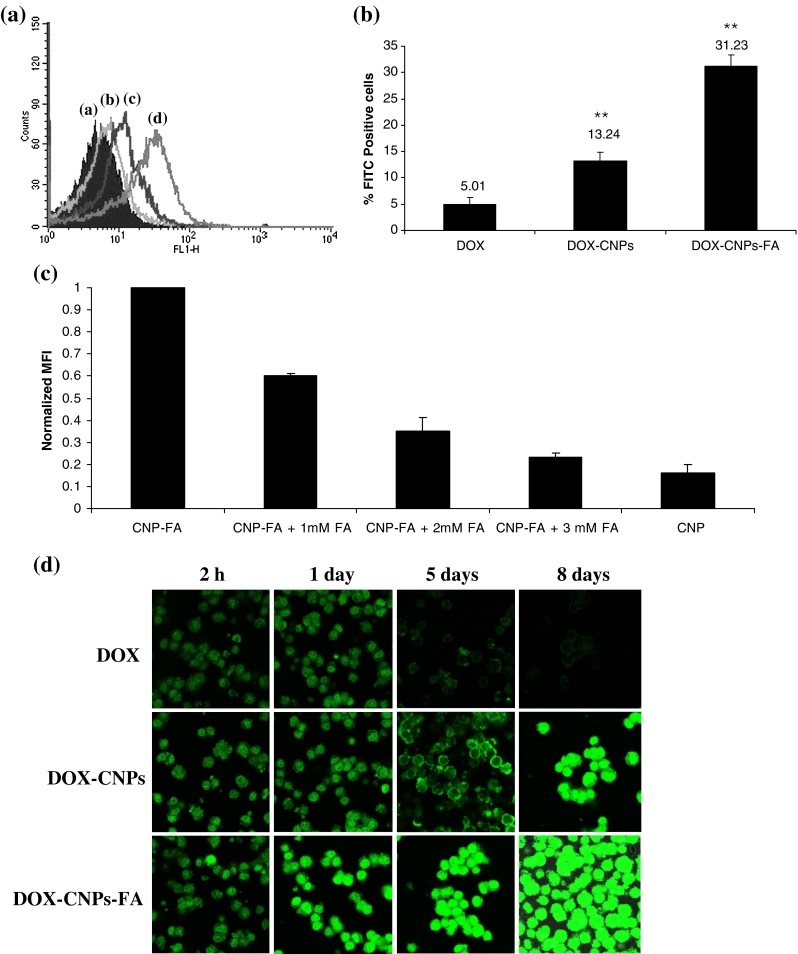Fig. 7.

Cellular uptake as a function of particle surface modification a folic acid conjugation increases nanoparticle endocytosis in Y-79 cells. Y-79 cells were incubated with native DOX and nanoparticles at a dose of 300 μg/ml for 2 h and the number of Y-79 cells with the endocytosed CNPs was detected by flow cytometry. a Control. b DOX. c DOX-CNPs. d DOX-CNPs-FA. Results are representative of one of three independent experiments. b Bar graph depicts the data from Fig. 7a demonstrating the uptake efficiency of various formulations. Data as mean ± S.D., n = 3. **p < 0.005, DOX in solution versus DOX-CNPs and DOX-CNP-FA. c Competitive inhibition of DOX-CNP-FA uptake by the addition of native FA. Y-79 cells were cultured overnight with 0–3 mM of native folic acid after which the cells were left untreated (control) or incubated with 300 μg/ml of nanoparticles for 2 h. Mean fluorescence intensity (MFI) of DOX fluorescence in the cells were measured and the value normalized to particle endocytosis of Y-79 cells. Data represent mean ± S.D., n = 3. d Time course study of intracellular retention of DOX-loaded NPs in Y-79 cells. Cells were treated with 5 μM of native DOX and equivalent concentrations of DOX in NPs (DOX-CNP and DOX-CNP-FA) in the growth medium. Cells treated with DOX in solution showed a decrease in green fluorescence intensity with incubation time, whereas DOX-CNPs demonstrated an increase with FA-conjugated CNPs demonstrating the fluorescence of the drug lasting up to 8 days. Results are representative of one of three independent experiments
